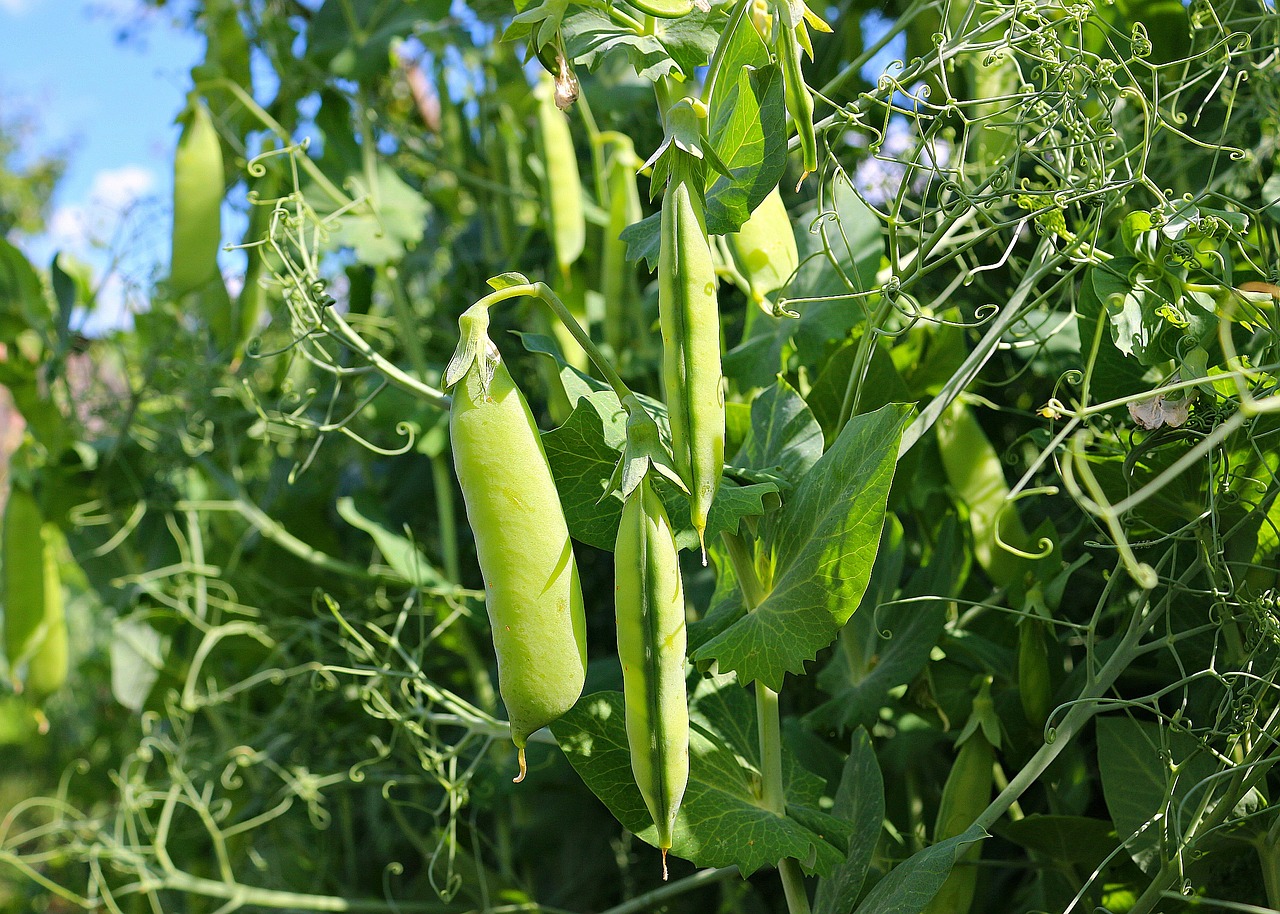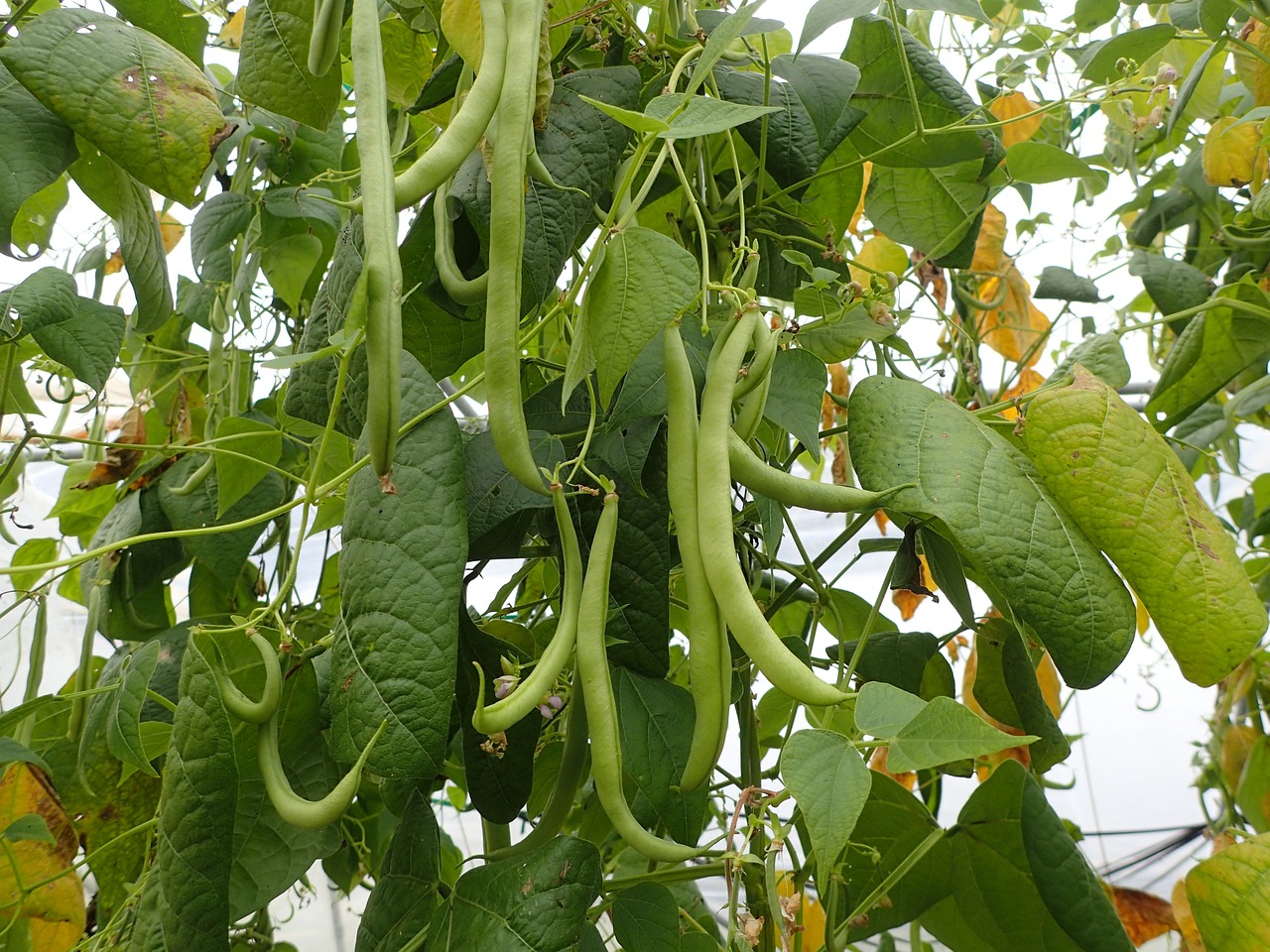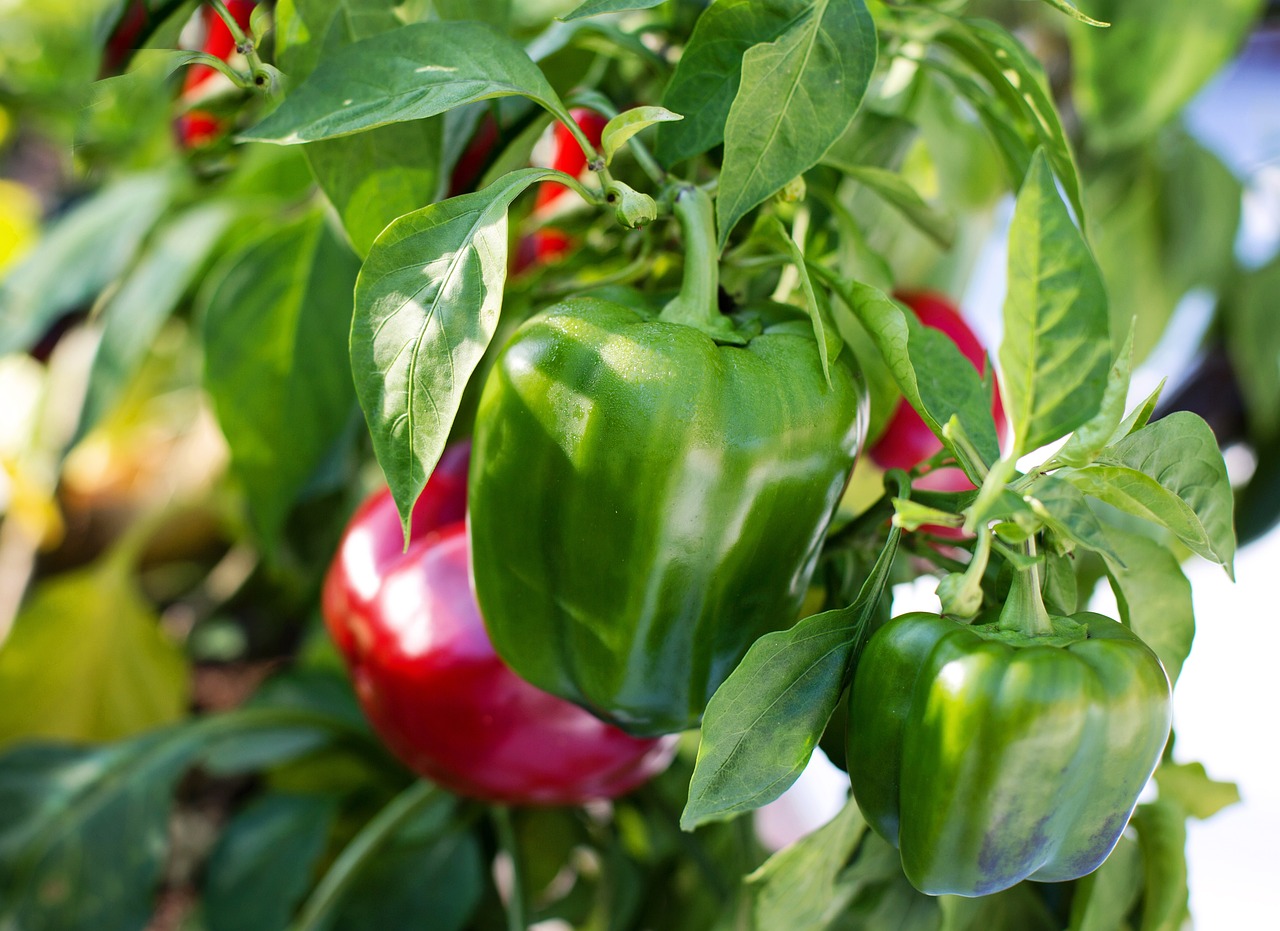Peas are relatively easy to grow plants, making them a popular choice for home gardeners, both novices and experts. Pea seeds typically germinate quickly, often within 7 to 14 days after planting, depending on the variety and growing conditions. This rapid germination provides early gratification for gardeners.
As plants grow, they produce lush and green foliage, providing a rich backdrop for the delicate flowers and developing pods. Pea flowers are beautiful, occurring in shades of pink, white, purple and blue, depending on variety and often attract pollinators. This adds to the overall beauty of a garden especially when the garden is located in a spot with visual interest.
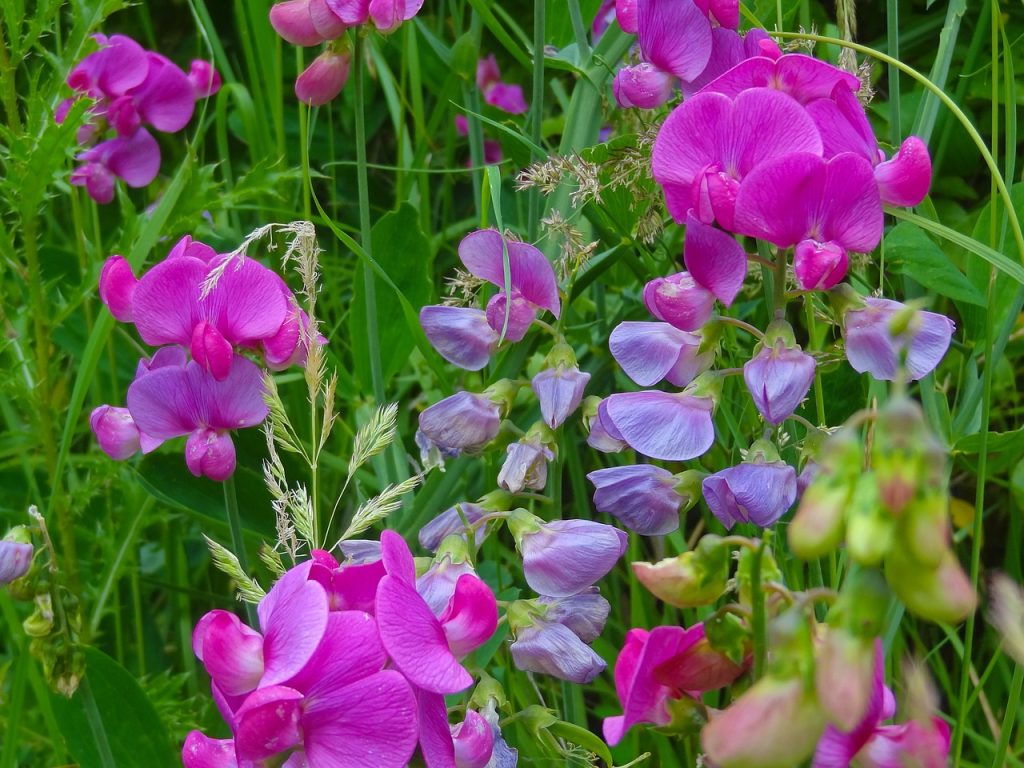
Description
Peas are leguminous flowering plants that belong to the family Fabaceae and are native to the middle East. They are annual plants which are widely cultivated for their seeds that are used in a variety of dishes.
Peas grow slender, vining stems that can grow up to 2-6 feet tall, although there are also bush varieties that grow lower to the ground. Their flowers are typically white, pink, blue or purple, and they have a distinctive shape with five petals. After pollination, pea flowers develop into pods, which are elongated and contain multiple seeds (peas) arranged in a row. The pods start out green and become progressively larger as the seeds inside mature. Depending on the variety, the pods may be harvested for their immature seeds (as in snow peas and snap peas) or allowed to mature fully for shelling peas.
Peas are rich in proteins, fiber and vitamins and minerals such as vitamin K, folate, potassium and iron.
| Botanical name: Pisum sativum | Propagation: Seeds |
| Common name: Peas, sweet peas | Soil type: Loam, sandy loam |
| Family: Fabaceae | Soil pH: 6.0-7.5 |
| Plant type: Annual | Temperature: 55-75°F |
| Hardiness zones: USDA zones 3-11 | Light: Full sun |
| Mature size: 3-6ft. tall | Spacing: 2-3 inches |
| Flower color: White, pink, purple | Pollination: Self-pollination, insects |
| Time to harvest: 60-80 days | Toxicity: Nontoxic |
| Native area: Middle East |
Types of Peas
Green Peas: These are the most common type of peas. They have a sweet flavor and vibrant green color. Green peas can be eaten fresh, cooked, or used in soups, salads, and stir-fries.
Snow Peas: Also known as Chinese pea pods, snow peas have flat, edible pods with tiny peas inside. They are often used in stir-fries and Asian dishes, and they have a delicate flavor and crunchy texture.
Snap Peas: Snap peas are a cross between green peas and snow peas. They have plump pods with full-size peas inside, and both the pods and peas are edible. Snap peas are often enjoyed raw as a crunchy snack or used in salads and stir-fries.
Yellow Peas: Yellow peas have a slightly sweeter and nuttier flavor compared to green peas. They are commonly used in soups, stews, and Indian dishes like dal.
English Peas (garden Peas): These peas are larger than green peas and have a sweeter flavor. They are typically shelled before eating, and the peas inside are round and tender. English peas are often used in recipes that call for fresh peas, such as pasta dishes, risottos, and purees.
Temperature requirements
Peas thrive in temperatures ranging from 55-75°F (13-24°C) during their growth phase. They can tolerate slightly warmer temperatures but may suffer in extreme heat.
Soil requirements
Peas prefer to grow in well-drained soil that allows excess water to drain away freely. Waterlogged soil can lead to root rot and other diseases. Avoid growing peas in heavy clay soils or amend clay soil with organic matter to improve its texture and drainage.
Grow peas in loam or sandy loam soil with slightly acidic to neutral soil pH, ideally between 6.0 and 7.5.
Light/Sun requirements
Peas need to grow in a location that receives full sun (6-8 hours of sunlight per day) in areas with cool climate. However, in areas with intense heat, consider providing morning sun and afternoon shade so that plants do not become stressed during hot summer days.
When to plant Peas
In regions with cold winters, plant peas in early spring as long as the soil can be worked. You can plant peas several weeks before the last frost date, as they can tolerate light frost.
If you live in an area with mild winters, you can plant peas in late summer or early fall for a fall harvest. Plant peas about 8-10 weeks before the first expected frost date in your area. This allows the peas to mature before cold weather sets in.
To extend the harvest period, consider planting peas in successive batches, spacing out planting dates by two to three weeks. By doing this, you will get a continuous supply of fresh peas throughout the growing season.
Garden preparation
Conduct a soil test to assess the pH level and nutrient content of your soil. Peas prefer slightly acidic to neutral soil with a pH range of 6.0 to 7.5.
Based on the soil test results, amend the soil as needed. Add organic matter such as compost, well-rotted manure, or aged compost to improve soil structure, fertility, and drainage.
Peas have delicate roots that require loose, friable soil for proper growth. Use a garden fork or tiller to loosen the soil to a depth of 6-8 inches (15-20 cm), breaking up any clumps and removing debris such as rocks and weeds.
Peas are vining plants that benefit from support to climb as they grow. Install trellises, stakes, or pea netting in the garden bed before planting to provide support for the pea vines. Alternatively, you can plant peas near a fence or other existing structure for them to climb.
Planting Peas
Pre-soak pea seeds in water for a few hours before planting to promote germination. This can help soften the seed coat and speed up germination.
Water the garden bed thoroughly before planting peas to ensure that the soil is evenly moist. This helps to provide a good environment for germination and early seedling growth.
Plant pea seeds at a depth of 1-2 inches (2.5-5 cm) in the soil. Provide spacing of 2-3 inches between plants and approximately 18-24 inches (45-60 cm) apart between rows. This provides enough room for the plants to grow and allows for easy access for watering, weeding, and harvesting.
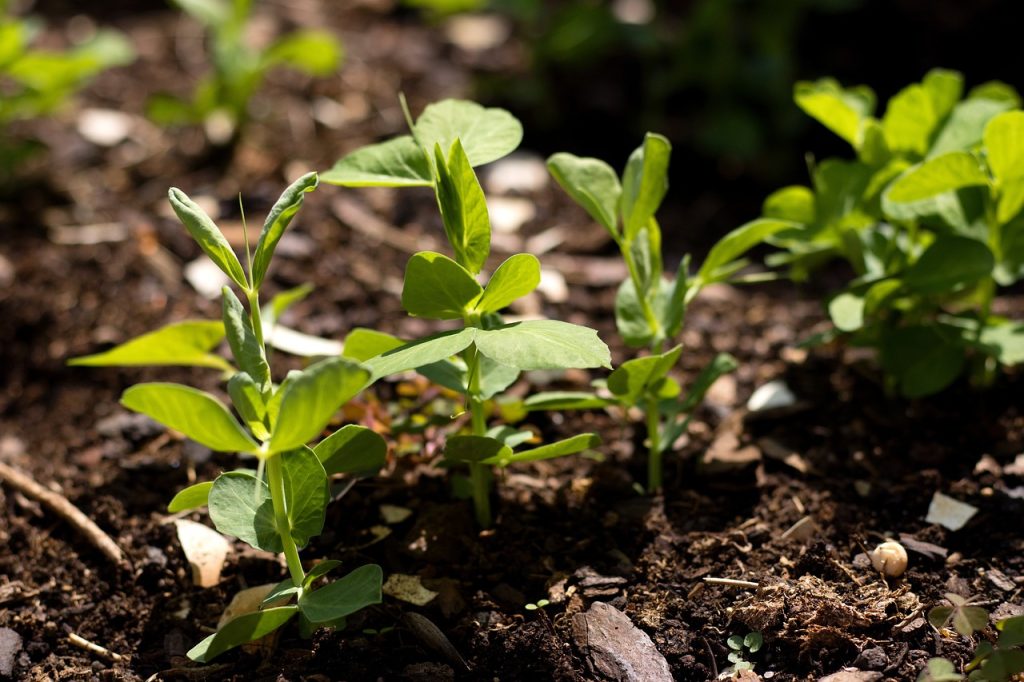
How to Care for Peas
Supporting Pea Vines: Peas are climbing plants that benefit from support. Install trellises, stakes, or pea netting at the time of planting to provide support for the vines as they grow. As the pea vines grow, gently train them to climb the support structure to prevent tangling and promote upward growth.
Watering: Keep the soil consistently moist but not waterlogged throughout the growing season. Water deeply and regularly, especially during dry periods.
Mulching: Apply a layer of mulch around the base of pea plants to help retain soil moisture, suppress weeds, and maintain a more consistent soil temperature.
Fertilizing: Peas are nitrogen-fixing legumes and generally do not require additional nitrogen fertilization. However, if your soil is deficient in other nutrients, you can side-dress with a balanced fertilizer or provide a foliar feed as needed.
Weeding: Weed plants regularly to prevent competition for nutrients and moisture. Be careful not to disturb the shallow roots of pea plants.
Thinning: Thin pea seedlings if they are overcrowded after germination, leaving the strongest and healthiest plants while providing enough spacing.
Harvesting Peas
Peas are ready for harvest at around 60 to 80 days from the time of sowing seeds depending on variety. At this time, the pods are plump and the peas inside are fully developed but still tender. Harvest peas regularly to encourage continuous pod production.
Use scissors or pruners to harvest peas, cutting the pods from the vine without damaging the plant.

How to Store Peas
If you do not intend to cook your peas immediately after harvest, you can blanch them and store in your refrigerator for later use. Blanching peas before storage can help preserve their color, flavor, and texture. To blanch, bring a pot of water to a boil, then add the peas and boil for 1-2 minutes. Refrigerate or freeze peas for later use.
Pest and Disease Management
Peas are commonly attacked by pests such as aphids, pea moths, and pea weevils. Handpick pests, use baits or use organic pest control methods like neem oil.
Watch for signs of diseases such as powdery mildew, damping-off, and root rot. Provide good air circulation and avoid overhead watering to reduce the risk of fungal diseases.

